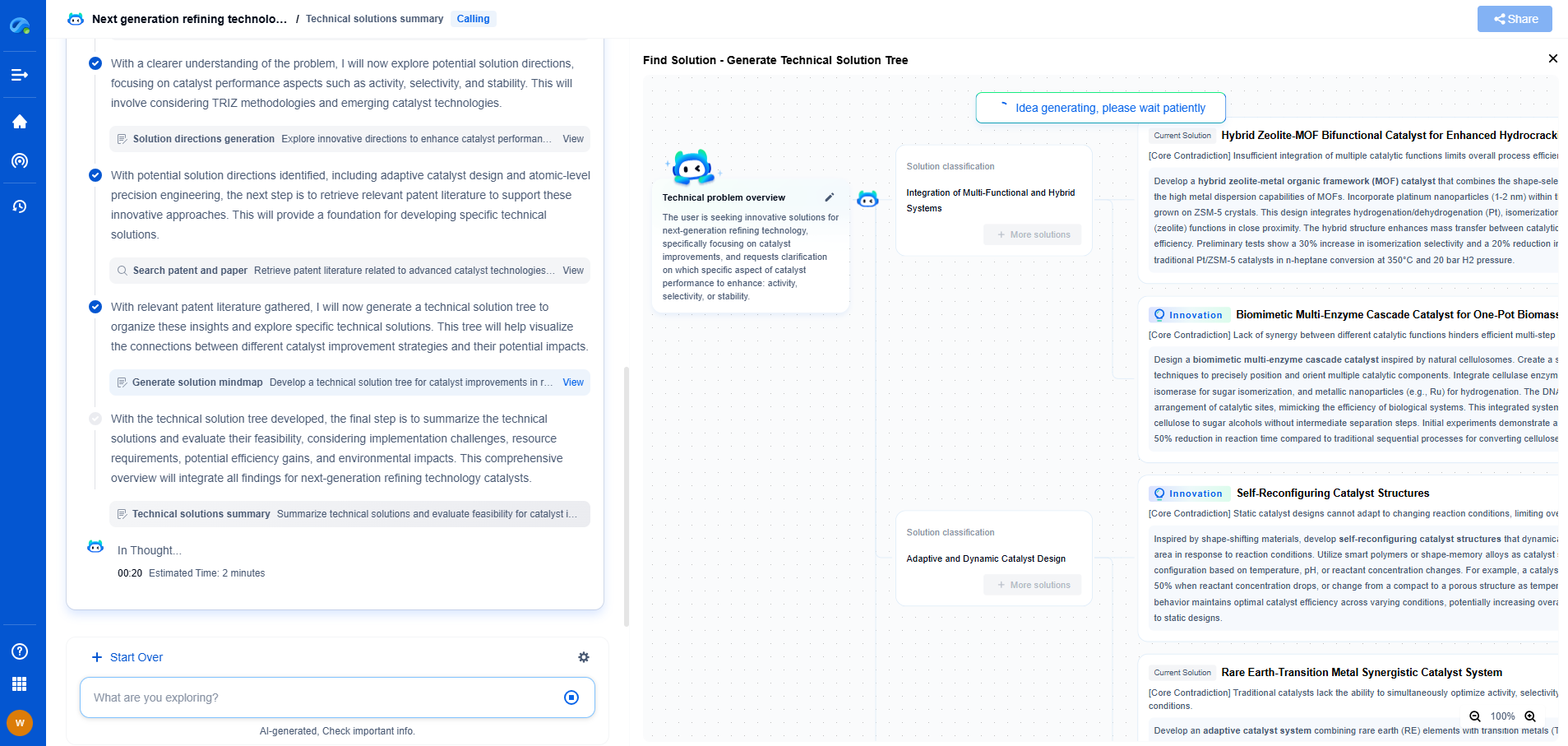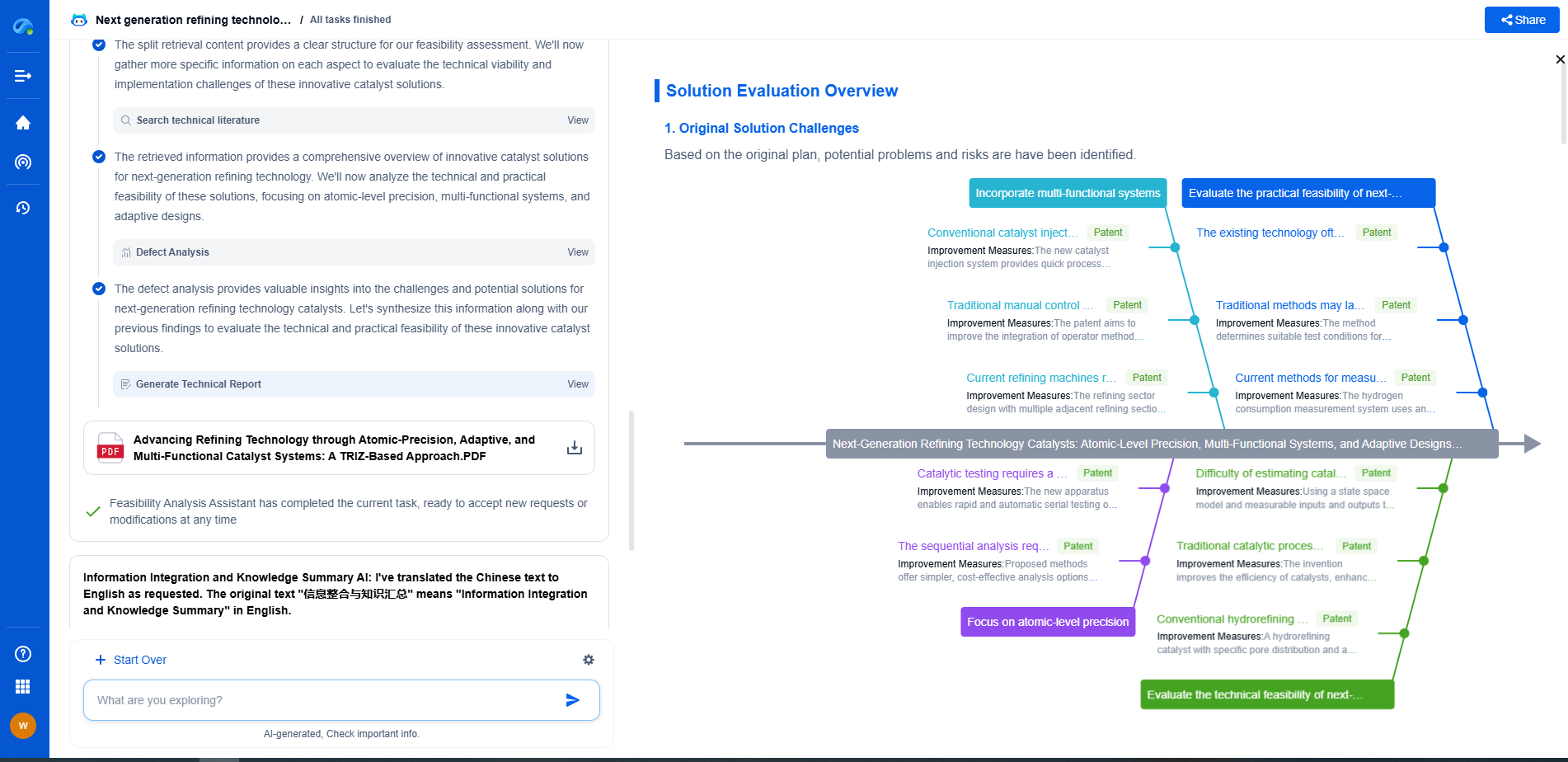SCADA vs Digital Twin: Which Is Better for Wind System Control?
JUN 26, 2025 |
In the quest for optimizing wind system control, two prominent technologies have emerged as frontrunners: SCADA (Supervisory Control and Data Acquisition) and Digital Twins. Both offer unique advantages and capabilities, leading to a debate about which is better suited for managing the complexities of wind energy systems.
Understanding SCADA Systems
SCADA systems have been at the core of industrial control for decades. They are designed to collect real-time data from sensors and devices, enabling operators to monitor and control processes remotely. In wind energy systems, SCADA is utilized to oversee turbine operations, monitor weather conditions, and ensure the efficient generation of electricity.
One of the key strengths of SCADA is its ability to provide operators with a centralized view of the system's performance. This allows for the rapid identification of any issues that may arise, facilitating timely interventions and minimizing downtime. Moreover, SCADA systems are well-established, with proven reliability and a wealth of accumulated expertise in their deployment and operation.
The Emergence of Digital Twins
Digital Twin technology, on the other hand, represents a newer paradigm in system control. A Digital Twin is a dynamic, virtual model that mirrors a physical object or process in real-time. In the context of wind systems, Digital Twins can simulate entire wind farms, individual turbines, or even specific components, providing a comprehensive view of their behavior under various conditions.
The major advantage of Digital Twins lies in their predictive capabilities. By simulating different scenarios, Digital Twins can forecast potential issues, allowing operators to proactively address them before they impact operations. This predictive maintenance can significantly reduce costs and improve the system's overall efficiency. Additionally, Digital Twins enable more sophisticated analytics, offering deeper insights into system performance and facilitating data-driven decision-making.
Comparative Analysis: SCADA vs. Digital Twin
When comparing SCADA systems to Digital Twins, several factors need to be considered:
1. **Real-time Monitoring vs. Predictive Insights**: SCADA excels in providing real-time data and immediate control actions, which are crucial for instant system management. Digital Twins, meanwhile, offer predictive insights, enhancing long-term planning and preventive maintenance.
2. **System Complexity**: SCADA systems are typically easier to implement in simpler setups, while Digital Twins can better handle complex scenarios due to their advanced modeling capabilities.
3. **Data Handling**: SCADA systems traditionally manage real-time data efficiently. In contrast, Digital Twins require extensive data processing and integration, which might necessitate additional resources and expertise.
4. **Implementation Costs**: SCADA systems usually have lower initial setup costs, given their established nature and widespread use. Digital Twins, being more sophisticated, may involve higher upfront investments but promise greater returns through optimized operations and maintenance savings.
Choosing the Right Technology for Wind System Control
The decision between SCADA and Digital Twins should ultimately depend on the specific needs and goals of the wind system in question. For operators seeking robust real-time monitoring and control, particularly in established systems, SCADA remains a solid choice. However, for those aiming to leverage cutting-edge technology for predictive maintenance and comprehensive system analysis, Digital Twins present an enticing opportunity.
In some cases, a hybrid approach may be the most effective solution, combining the strengths of both technologies to create a more resilient and efficient system. By integrating SCADA's real-time capabilities with the predictive insights of Digital Twins, operators can gain a more holistic understanding of their wind systems, maximizing the benefits of both technologies.
Conclusion
As the wind energy sector continues to evolve, adopting the right technology for system control becomes increasingly crucial. Both SCADA and Digital Twins offer distinct advantages, and their applicability will depend on the specific operational requirements and strategic objectives of each wind system. By carefully evaluating these technologies, operators can enhance the performance and sustainability of their wind energy assets, contributing to a more reliable and efficient energy future.
Empower Your Wind Power Innovation with AI
In the fast-evolving landscape of wind turbine technology—where aerodynamic optimization, generator efficiency, and structural innovation are critical—staying ahead requires more than just expertise. It requires intelligent tools that accelerate R&D and protect your competitive edge.
Patsnap Eureka is your AI-powered research assistant, designed specifically for innovators like you working at the forefront of Wind Motors. Whether you're analyzing blade design trends, exploring novel gearbox architectures, or navigating complex global patent landscapes, Eureka streamlines the entire process with precision and speed.
👉 Experience how Patsnap Eureka can revolutionize your R&D and IP strategy. Request a demo today and power up your next breakthrough.
- R&D
- Intellectual Property
- Life Sciences
- Materials
- Tech Scout
- Unparalleled Data Quality
- Higher Quality Content
- 60% Fewer Hallucinations
Browse by: Latest US Patents, China's latest patents, Technical Efficacy Thesaurus, Application Domain, Technology Topic, Popular Technical Reports.
© 2025 PatSnap. All rights reserved.Legal|Privacy policy|Modern Slavery Act Transparency Statement|Sitemap|About US| Contact US: help@patsnap.com

